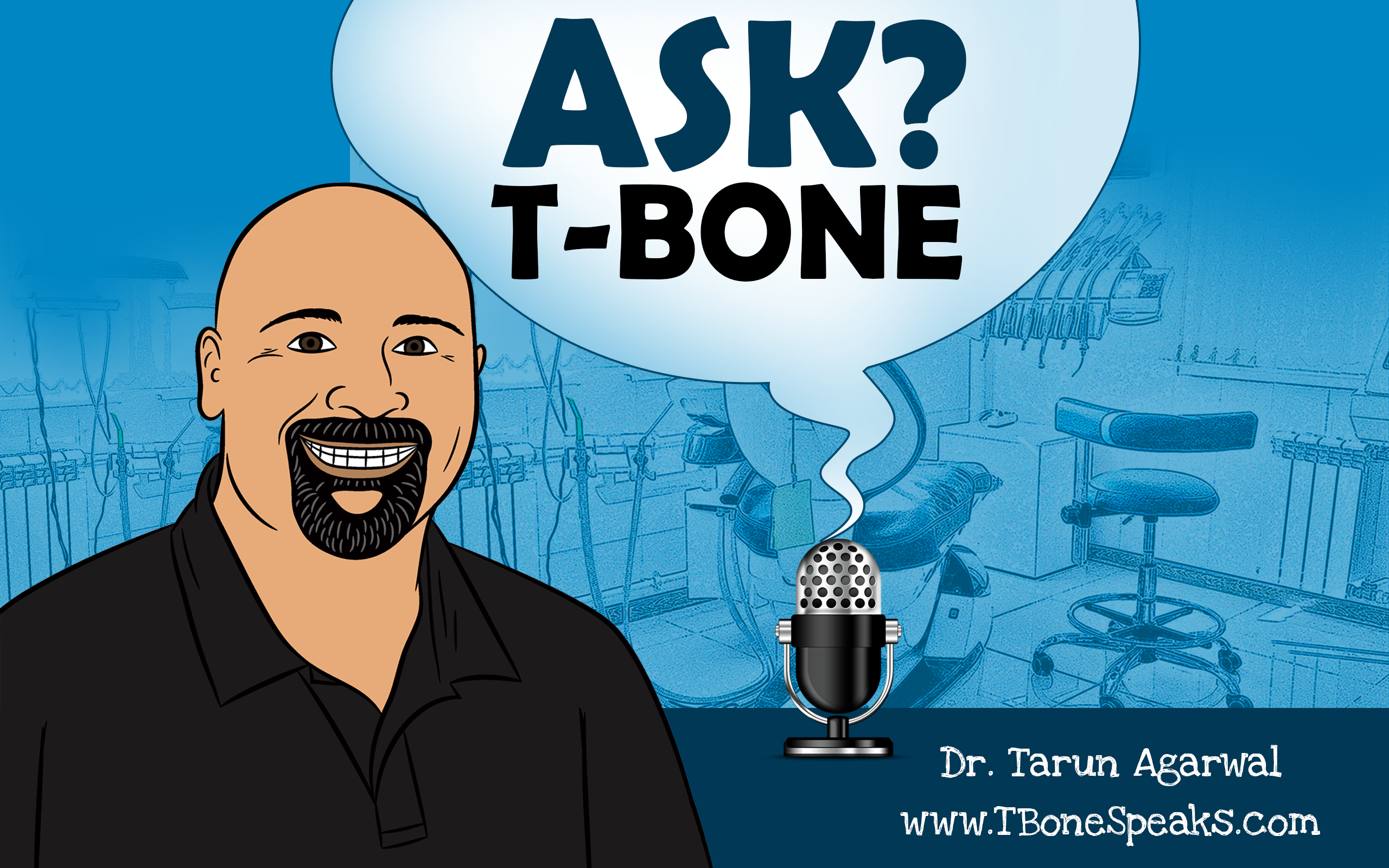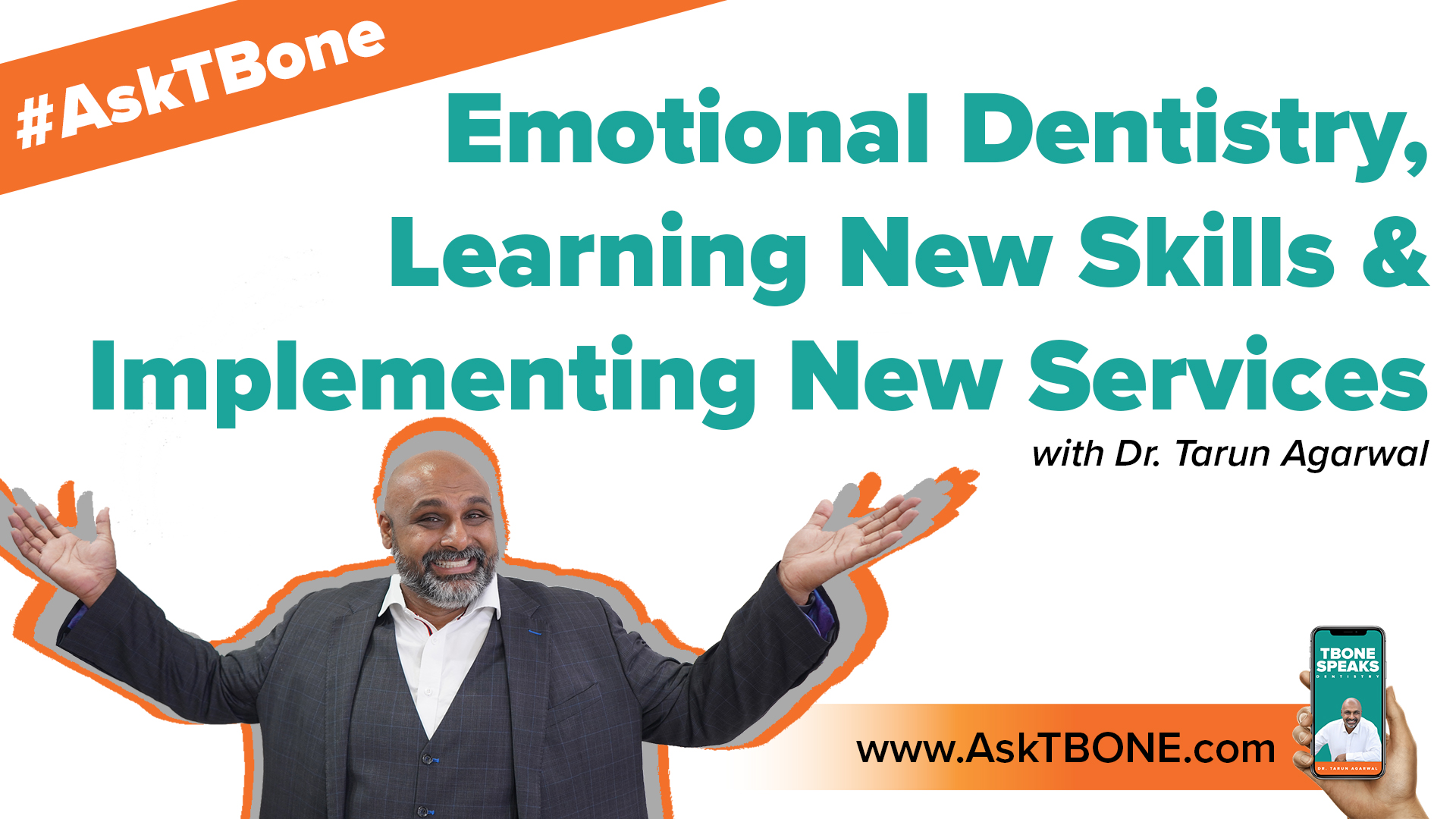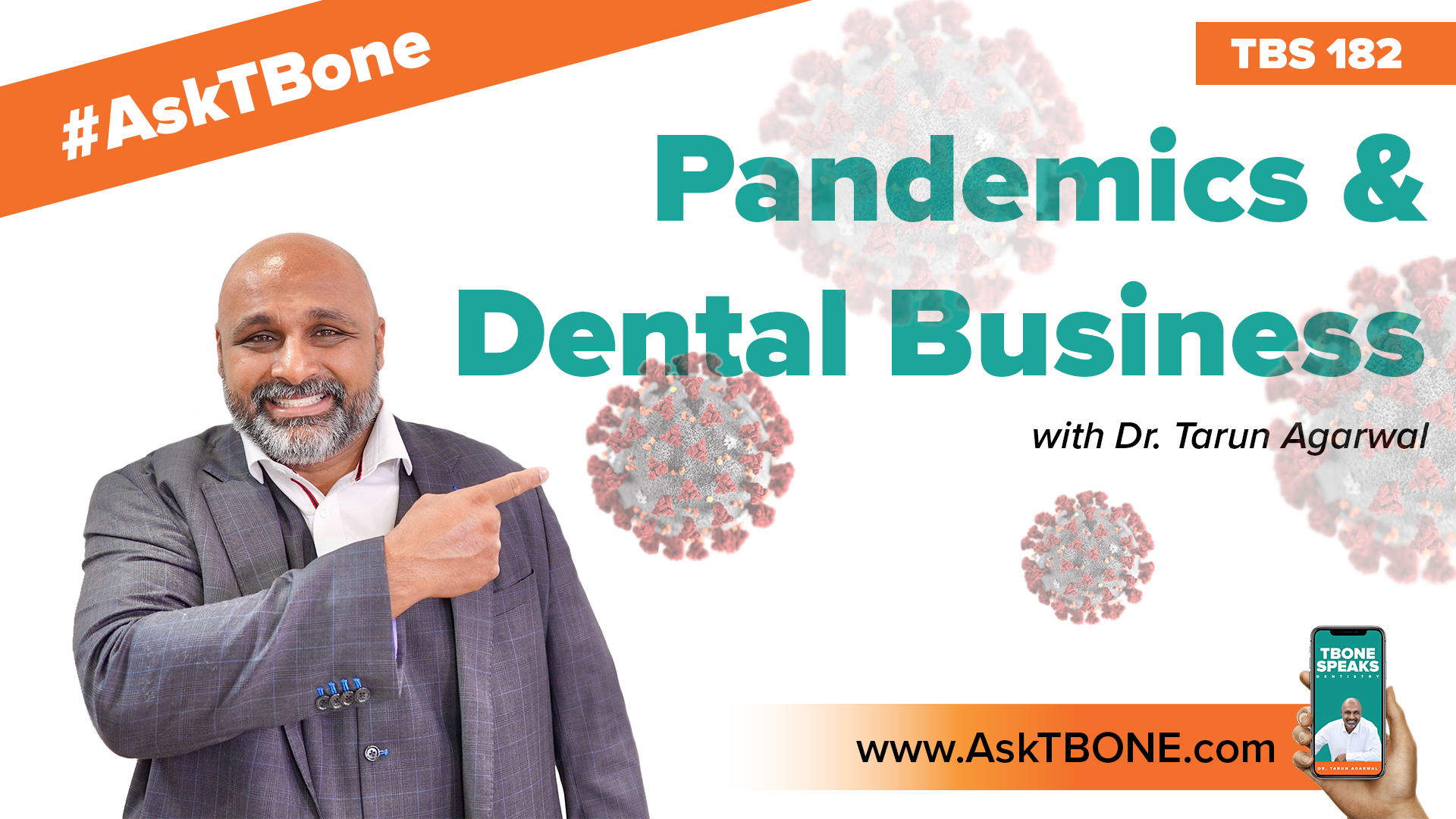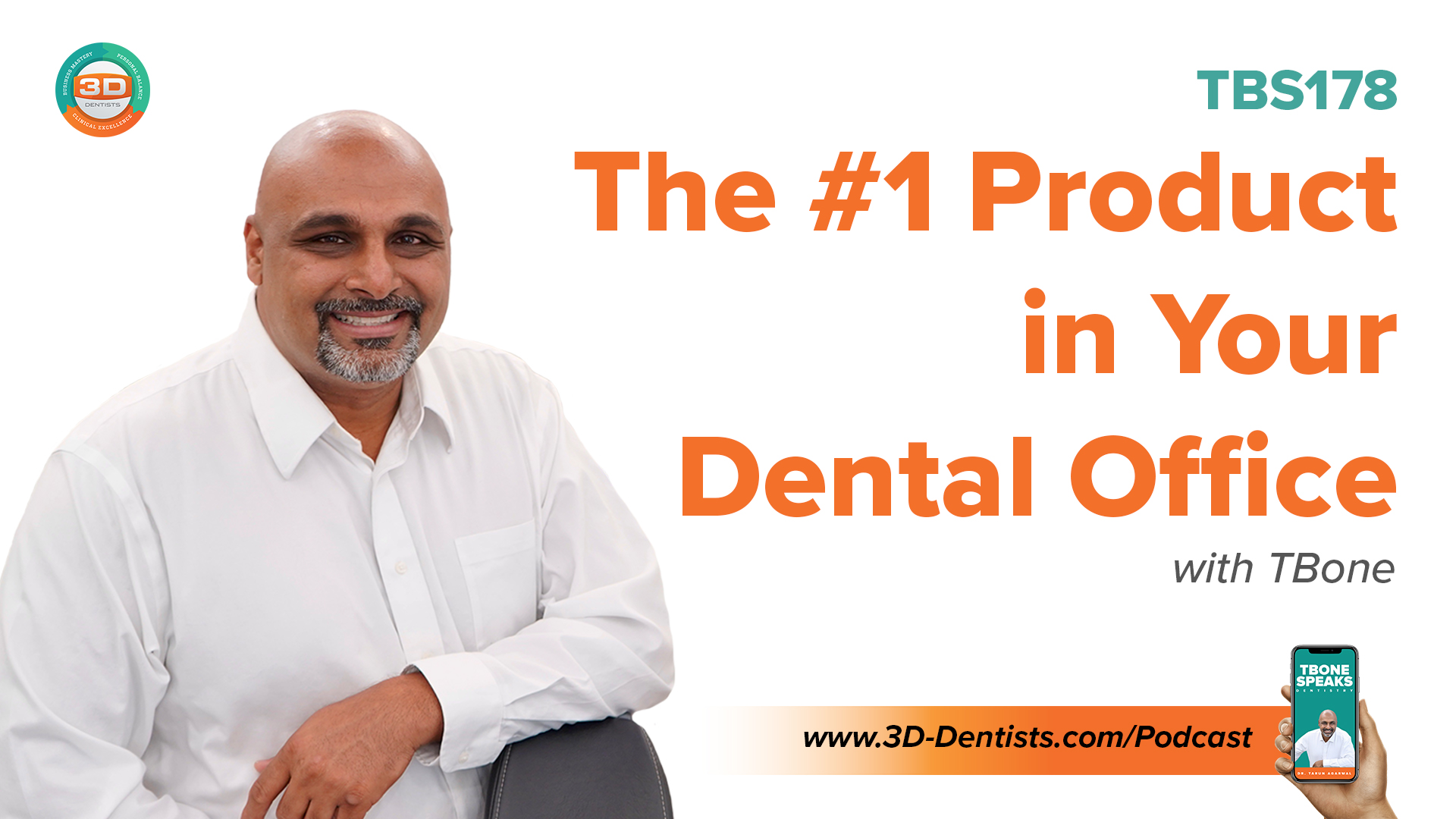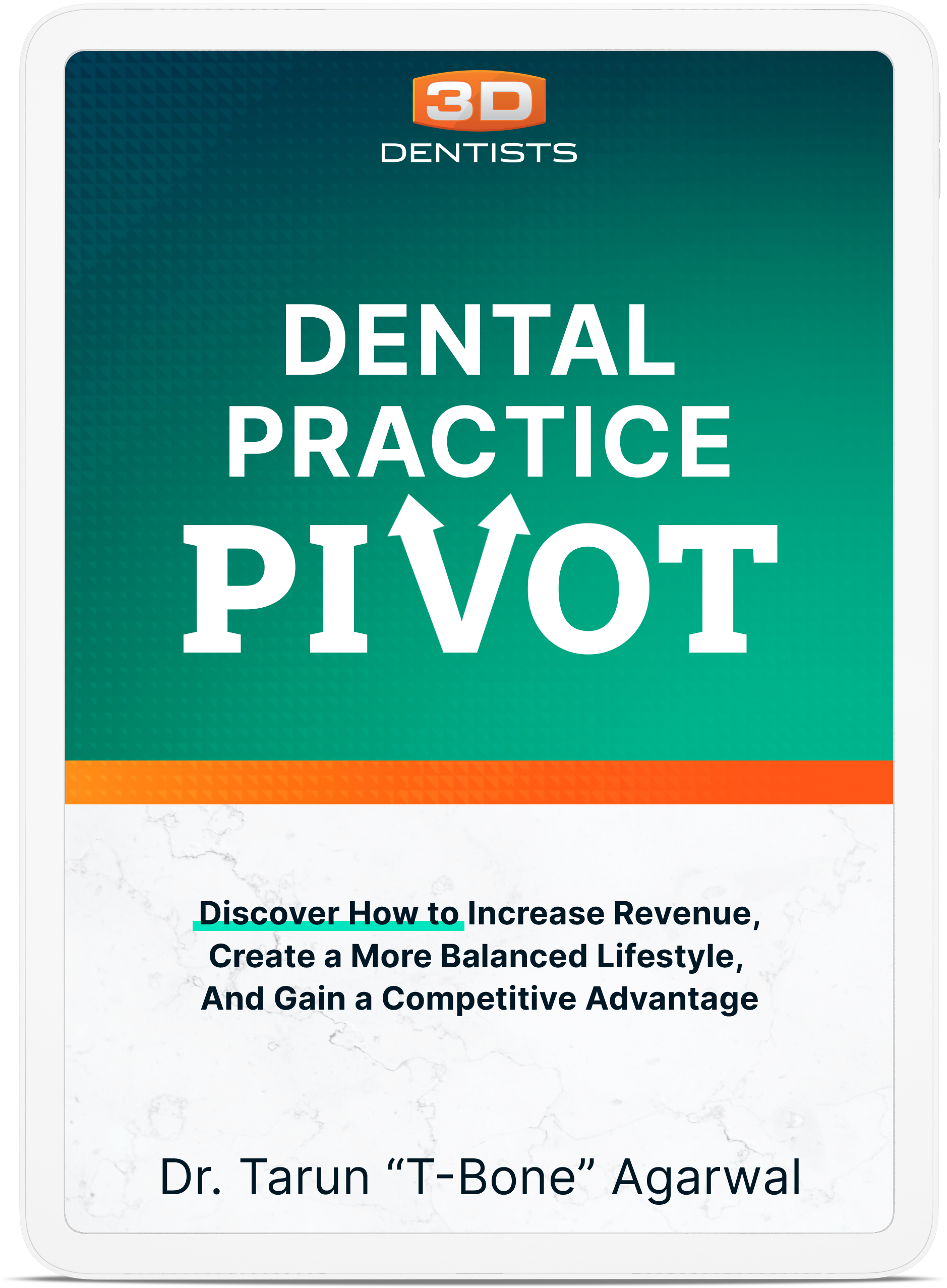Hello, and welcome back to another episode of Ask T-Bone, on the T-bone speaks podcast! Today we have a question in relation to our financial menu and I think maybe I’ve created some confusion to some of the listeners. Today’s question was submitted by Jason, and Jason’s question was:
I love the menu idea for creating treatment awareness and for clarity and treatment fees such as implants. How and at what point in the patient experience do you present the menu to a patient? It’s not as if they are hungry and waiting to order a meal, you are providing them with something they didn’t know exist to create an awareness for something they didn’t know they want. It feels tricky to come off as genuine and patient-centric.
So Jason, I’m a little confused to be quite honest with you. We don’t have a menu of services with prices on there. What we have is a financial worksheet, or a financial menu that allows our patients to choose how they can pay for treatment. So I’m going to go on the assumption that that’s what you’re talking about here. So, when we present that to a patient? As soon as we, you know basically ultimately what it boils down to is you have to recognize that the problem exists you have to create awareness. As Paul. how many talks about you have to walk into the 4 quadrants you have to find out if the patient is aware and cares, unaware and don’t care, all of those things. So you have to walk them backwards to make sure that they are aware and they care, and then once they are aware and they care, then you put together treatment plan and then we present them with our financial menu or worksheet that allows them to know which ways to pay for it. So, we don’t present cost to patients or the ways that they can pay for treatment until we’ve created the awareness and created some level of desire.
Now, often times we will won’t present a financial menu to a patient at all, if the patient says I’m actually not interested in that. What’s the point? You know, then you may I come off as being a sales person. Sometimes the patient says I’m not interested right now or yet, then we’ll want to go ahead and give a worksheet to the patient with a financial menu to the patient and the verbiage I use there is we want to go ahead and give this to you. I know you’re not ready quite yet, but this way you know what everything looks like, what your options are so that when you are ready you can go in the start planning your life accordingly. And the reason I like to do this is let’s say for example I want to buy a new furniture set and I can’t I don’t want it quite yet but I want to go to the store and I want to know how much these things cost and I also do want to know kind of what my options to pay for it are. So that way when I am ready for the furniture set, that way I already have an idea of how much it costs, things my go up or down, certainly in the retail world things go up and down and then the different financial options in a retail setting you know they’re very from time period to time period. In a dental office generally speaking our fees don’t go down and generally speaking we don’t have many different ways of paying for things or those things don’t change all that much. So that way my patients knows, -Hey, when you’re ready to do Invisalign, you’re looking at 5 grand out of pocket.- That way we have everything together, we’re good to go and then no questions. And then that way when the patient is ready to go, it’s really more about finding out what option works best for them, going through our risk, benefits and alternatives, and not at that point start to talk about fees.
So often, you know, one of things fundamentally I’d like to go back to is, when you present treatment options to patients I like to go ahead and ballpark them right away. I like to give him an idea, something like that might be a few hundred dollars, something like that might be a few thousand dollars, something like that might be the cost of a used car, something like that might be the cost of a new car, something like that might be the cost of a luxury car or something like that might be in the $10,000 to $20,000 ballpark, something like that might be in the $20,000 to $40,000 Ballpark, and I’m not afraid of giving fees, I’m not afraid of giving ballparks, I’m not afraid of giving very wide ballparks, because I want the patient to know that this type of treatment is going to be in this type of ballpark. That way you can be honest with the patient you can be upfront with them, and to me that’s what’s being patient centric. Is not having that feeling that you’re hiding things from them, that you up front. And the easier it is for you to ravel of the fees or the analogy for the fees the more patient-centric you become and the more confidence and which you present the fees to a patient with.
So again let me walk you guys through a typical scenario. A patient comes in through hygiene What working with them, we know, we find several fillings and maybe a crown that needs to be done. At that point will make the patient aware that these things are going on, we’ll talk to them real briefly about what a filling is, what a crown is, why they need to be done, will show them the proof of what we are saying about, the proof may be x-rays, the proof may be photographs, hopefully both at a minimum, and then will ask the patient if they have any questions about this. And then we will say, well, go ahead and you know, we will make a statement like we’ll go ahead and put together a treatment plan, and that way you can know the different options available to you to make this fit within your life. And that in a way is not asking permission but it’s asking permission. Because at that point your patient can say -Listen, I’m never going to do that, I don’t believe you- or something like that, and at that point we’ll put together the financial menu worksheet, and that way we can present it to the patient. At the top of the sheet will have written up their the treatment plan, in other words tooth color fillings, white fillings, whatever you want to call it, upper right, tooth number XYZ and crown, all ceramic crown, or tooth colored crown, or white crown, whatever word you want to use. And then we’ll have the total fee there, any insurance estimate they have, and what the different options are for paying for that treatment. So, that kind of it in a nutshell.
So again we create awareness, we go through some level of education, and then we make a permission to style statement, would it be okay for us to go in and put together a plan for this? So that way you can know the different options that you have for payment. And we found a great success with that, certainly I’m sure sometimes to some people become of salesy, but I can promise you we’re not trying to be salesy. And the other thing I guess I can take an opportunity here, one of the other areas that we have pre-made financial worksheets done for procedures that the patients aren’t ready for right now, what that are common in our office. For example, Orthodontics. That’s a big ticket item, that’s three, four, five, six thousand dollars, but to me that’s a great thing to go ahead and have made, and to have a worksheet that you can give to your patient that is generic. That just says -Hey these are the, you know if you ever choose to do this, this is what something would look like with that. And to me it’s a matter of just asking patients, you know, if this was something that you’re interested in, would you be okay if we go ahead and give you a plan of what options are available to you? And often times patients will say -No, I’m never going to do that-. And then we have to get more comfortable with asking our patients questions. Just ask them, is that something that you never intend to do? Or is that something that just doesn’t work for you quite yet? And ask them. -So listen Ms. Jones, so I can plan better, we got to have the benefit there, how long do you think it would be before you could do that implant?- You know, for example we’re going to take a tooth out, and I always give the patient the choice right away of doing an immediate implant, starting tooth replacement therapy, versus doing an extraction. And the patient say -You know, that doesn’t work for me right now- And the key word is right now, and I will say -Ms. Jones, do you have an idea, so I can plan better, make sure I give you the best options. Do you have an idea when that could work for you? And she may say -You know, it might be several years- Then we have to have a different plan. I need to talk to her about the potential for needing do bone grafting down the road, well she sais -You know, right now I got to get through a few things for the next few months, 6 months, 9 months, then we’re going to go ahead and say -That’s great. We’ll go and take this tooth out, we will do some site preservation, and by the time we’re ready to place that implant, things in your life hopefully will be better, so I’ll go ahead and give you a plan, so that way you can know the cost that will be there for 6 months from now and the different ways that are available in our office to pay for it.-
So, hopefully Jason I answered your question and I want to thank you and everybody for listening.
And continue to send your questions: www.tbonespeaks.com
Enjoy The Show?
- Don’t miss an episode, subscribe via iTunes, Stitcher or RSS.
- Leave us a review in iTunes
- Join the conversation by leaving a comment below!

